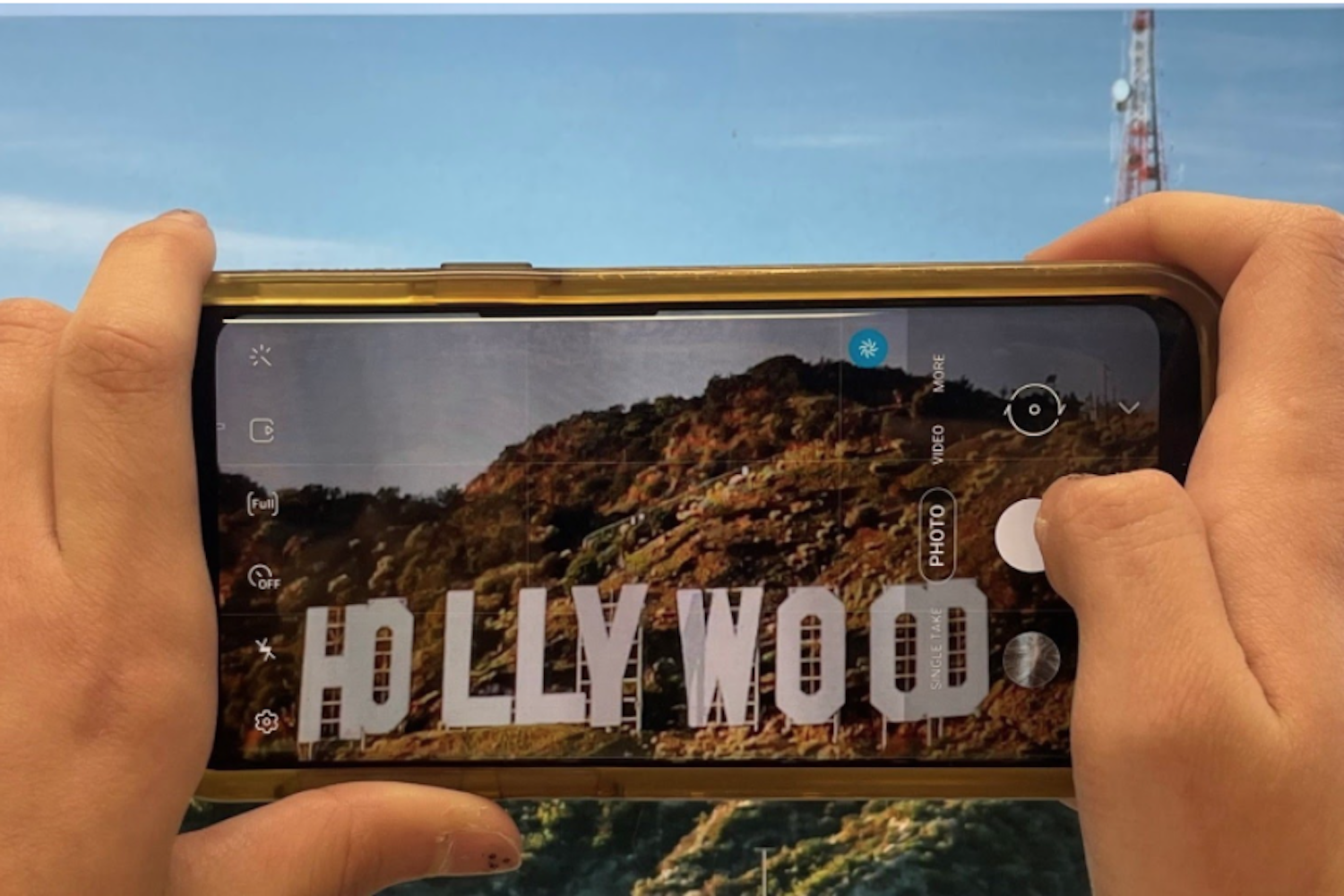How it started was simple. A person logged onto Instagram for the very first time, circa 2010. They were expecting to catch up with family or old friends through innocent photos and instant messages. Despite this original intent, they quickly learned that it wasn’t truly like that at all.
They first saw some pictures of the actresses in the latest hit movies that all their friends were gabbing about. From there, they lost their footing. As they fell down the rabbit hole, quietly and increasingly, they fell into a spiral of self-doubt and resentment.
Their nose was too big, their eyes too small, their hair was too messy, their body too flabby. All at once, they felt that they could never measure up to the perfect images on their screens. And so they locked themselves into a room with that fractured mirror and stayed there, always seeing some perfect girl in the mirror, grinning at them with a Cheshire smile. Thoughts such as you know you’ll never be as good as them circulated around their head. They wouldn’t be the last to fall into this dangerous cycle.
While any person can view the lives of a celebrity distorted by social media, many teenagers easily find themselves falling into the rabbit hole of obsession. They can stumble upon a false sense of perfection as they comb through the edited lives of celebrities, creating a mania that can be highly destructive and hard to break out of.
In Impacts of Dark Side of Online Social Networks (OSNs) on Users: an Agenda for Future Research, published by the University of Technology, Sydney (UTS), Ph.D. candidate Layla Boroon, from the University of Technology Sydney spoke out on the physiological risks.
“Some of the most common negative impacts included psychological harms such as jealousy, loneliness, anxiety, and reduced self-esteem, as well as things like exposure to malicious software and phishing risks,” Boroon said.
Teenage obsession with seemingly flawless celebrities can only heighten these feelings, as users idolize and surround themselves with their curated images of lavish lifestyles, perfect skin, glowing hair, and beautiful bodies.
In his 2013 book “Understanding Fandom: An Introduction to the Study of Media Fan Culture,” Mark Duffett defines fandom as a sociocultural phenomenon largely associated with modern capitalist societies, electronic media, mass culture, and public performance.
Duffett explores the origins of the word fan, as it comes from fanatic – a word originally used to describe religious enthusiasts. This term has developed to describe zealots of any person, place, or topic.

“Fanatic” came to encapsulate supporters of idols in the transitional period of the introduction of media in the late 1920s and the golden age of television in the 1940s and 1950s. Notable actors became icons, heartthrobs, and sex symbols. Gregory Peck and Humphrey Bogart were some of the male actors that captured the hearts of women across America, while Elizabeth Taylor, Marilyn Monroe, Grace Kelly, and Audrey Hepburn were some of the leading ladies that became national sweethearts.
Fans would not only adore their favorite performers through word-of-mouth socialization but also began to write letters to production companies. This fan-to-icon communication gave way to a more personal connection between common folk and figures.
“At the end of the 1920s, the Hollywood studios collectively received over 32 million fan letters per year for both male and female stars,” Duffett said.
While the burgeoning fandom craze began in the 20th century, it did not stop there. Just as televised and broadcasted media gave a pedestal to celebrities, many more platforms were produced. In the 1990s and early 2000s, television saw a general interest in often grotesque reality shows. However, beginning in 2003, the most important group of players was summoned.
Social media has played arguably one of the most critical roles in fandom creation since the golden age of television. There has been an increased number of platforms for fans to connect with their idols, whether through MySpace, which was an early harbinger of things to come, Facebook and Instagram, Twitter, or YouTube. What was once a simple means of communication between fans and celebrities became a microscope for prying eyes to view every detail of a person in the spotlight. This morphed into publicized paparazzi shots, style blogs, location tags, and opinion forums, picking apart what would be perfectly acceptable behavior for the average person.
While many aspects of a celebrity are often examined under a poor lens, it is not impossible for there to be normal fans. Some 21st-century fans have managed to maintain a connection with their celebrity idols. This ideal portrayal of adoration can be exemplified in the case of singer-songwriter Taylor Swift and her infamous group of fans known as the Swifties.
Swift has garnered millions of fans from her illustrious music career; she has released nine studio albums, two of which were rerecorded in 2021. She first began to gain fans through MySpace in 2004, 2005, and 2006, which were soon labeled Swifties. While any superstar is sure to have fans that admire them unconditionally, the Swift-Swiftie relationship is unique. Swift has prioritized fans — from lurking and commenting on fan-made Tumblr, Instagram, or TikTok posts to inviting fans to her homes to listen to albums ahead of release.
Swifties have dedicated themselves to the singer through social media platforms. One pair of fans, a married couple who go by Devin and Gab Johnson-Nieporent, hosts a weekly podcast called “Tay to Z” that analyzes Swift’s songs in alphabetical order.
“We wanted to start a podcast together as a creative outlet during the early months of the pandemic,” Devin and Gab said. “There weren’t many podcasts about her [Swift], and her discography is vast.”
As far as creating an episode, the couple said they begin by researching and listening to each song multiple times. They then craft a script based on a consistent template, delving into their opinions, facts, and speculations about the song. They record at whatever time of day is available, and then Devin edits using popular audio software, Audacity. They upload the episode through Buzzsprout and wait for listeners to tune in.
“The main goal of our podcast is to share our love of Taylor Swift with others. Taylor’s music helped us through growing up, and we hope to connect with our listeners through it,” Devin and Gab said.
Being adults, Devin and Gab have far more experience with which boundaries are appropriate as a fan. Since the couple is creating in the time of social media, they have far more interactions with younger and less disciplined fans.
“Luckily, we have never had an encounter personally with irresponsible Swifties, but we have seen it on the internet. I think anytime on the internet where there is a mob mentality is not a positive thing,” Devin and Gab said.
Because the online world idolizes celebrities so much, they seem to become untouchable. Everyday citizens are often not knowledgeable about the boundaries they need to set between themselves and an icon. This can be seen in critiquing a celebrity’s body, relationship, art, behavior, or persona. Many fail to understand the ramifications of these types of criticisms.
“The world of social media has made it so that there are very few boundaries. In many cases, it is up to the personality or stars themselves to maintain those boundaries with their fans,” Devin and Gab said. “For example, in the Miss Americana [2020 documentary following Swift as she crafts her seventh studio album, “Lover”] documentary, Taylor shared she has struggled with an eating disorder and that paparazzi photos, and comments affected her. Since the documentary, we have seen the general fandom respect this boundary and not discuss Taylor’s body. We always come from a place of love and respect for Taylor. We plan to maintain that.”
Supporting and following celebrities is commonplace for people of all age groups, but it can quickly get out of hand. Not only can celebrities be subject to abuse from hate comments and other incidents, but fans themselves can experience harm to their mental well-being and self-confidence. One of the most vulnerable groups of fans in the age of social media is teenagers.
In a time when minds are easily molded, and every bit of social information is rapidly absorbed, teenagers often fall victim to the unhealthy standards of celebrities. Unrealistic standards are set based on the glamorized idea of an idol. The problem with said standards is that everything is either manufactured, staged, decorated, or embellished. Under the microscope of social media, teenagers are exposed to these carefully crafted images and forced to draw comparisons that can have disastrous consequences.
“I think there are a lot of celebrities that only post images of themselves that are retouched or professionally done. What people are posting on social media can be extremely manipulated and fabricated,” sophomore Haley Brown said.
False realities are some of the most damaging forms of media around. Teenagers see these perfect bodies, impressive careers, and beautiful lives of the people in the photos and the videos, but it doesn’t show them the whole picture. By getting only part of the picture, the brain fixates on becoming “perfect” like them. Brown has experienced some of these feelings firsthand.
“It led to a feeling of ‘I’m not good enough,’” Brown said. “What can I do to improve myself to appeal to people like celebrities appeal to people?”
This fixation can become an obsession due to this increase in unrealistic beauty standards and lifestyles. The obsession grows until it can physically, emotionally, and mentally harm someone.
The media’s distortion of celebrity lives and images creates a massive problem for teenagers. The unrealistic things they see combined with the natural appeal of celebrities have led many down a dangerous path, leading to increased body dysmorphia, eating disorders, and depression. A research study conducted by the Johns Hopkins Bloomberg School of Public Health detailed this link.
“Researchers analyzed data from the 2005 to 2014 National Surveys on Drug Use and Health on adolescents and young adults to examine trends in ‘major depressive episodes over the previous year. Major depressive episodes, also known as clinical depression, occur when someone develops a depressed mood or a loss of interest or pleasure in daily activities along with other depressive symptoms consistently for at least two weeks,” the research read. “The rate of adolescents reporting a recent bout of clinical depression grew by 37 percent over the decade ending in 2014.”
Numerous other studies have found similar results. In their study, The Impact of the Media on Eating Disorders in Children and Adolescents, published in the National Library of Medicine, researchers Anne Morris and Debra Katzman found that exposure to media forms like television and social networks increased eating disorders and body dysmorphia.
Fandoms and interest in celebrities can quickly spiral out of control. Interest can become an unhealthy obsession. Obsessive fan culture can be hazardous when there are no concrete boundaries, leading to harmful behaviors. And unfortunately, due to social media and increasing time spent online, these problems are only growing for the current generation.
“We’re constantly fed content of upcoming events and success and how this person looks,” Brown said. “We’re taking it in more than I think any other generation has.”




